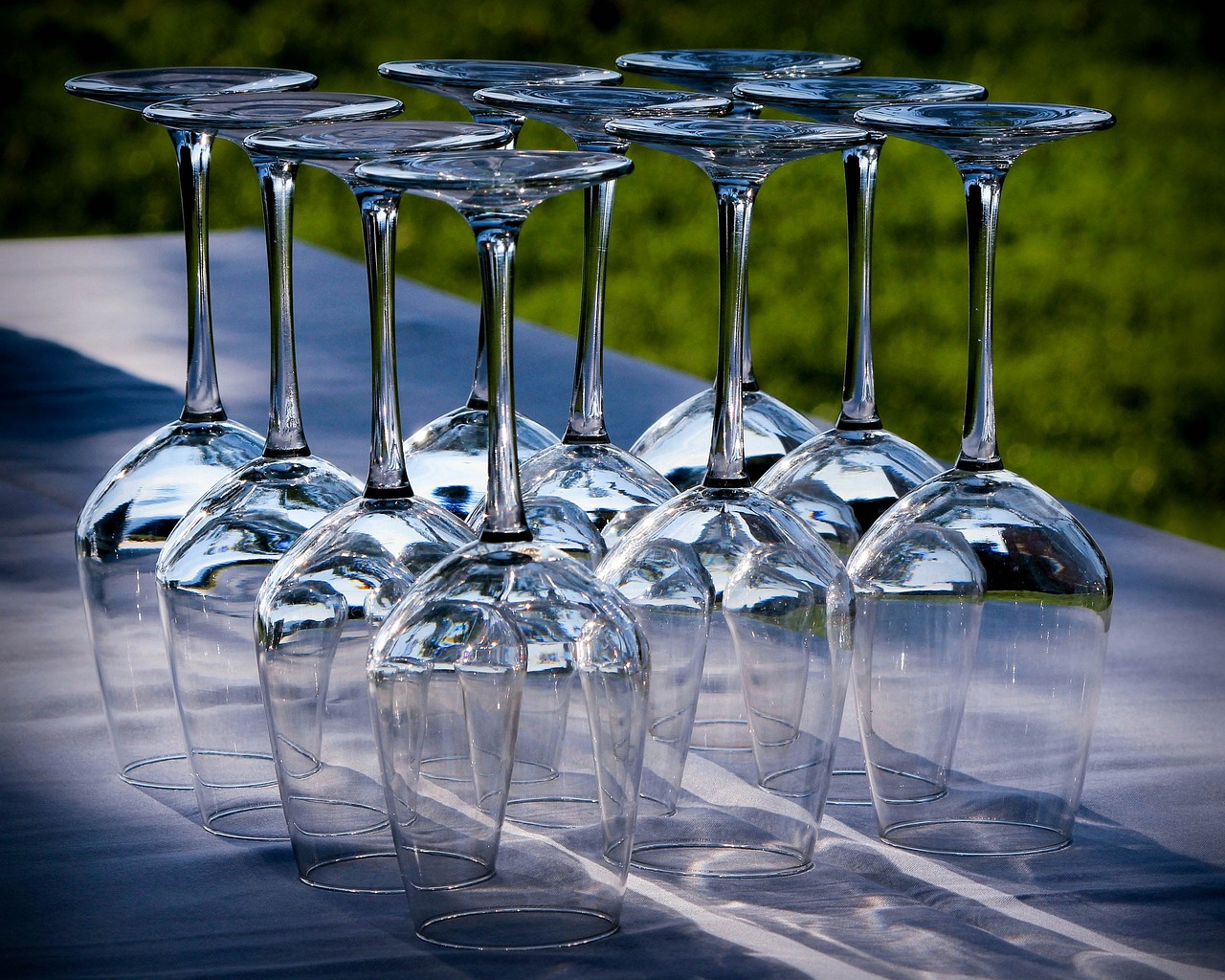The upside-down Christmas tree symbolizes a unique perspective on the holiday season. It represents the reversal of traditional values, inviting reflection on deeper meanings of faith, family, and community during Christmas.
Understanding the Tradition of Upside-Down Christmas Trees
The upside-down Christmas tree has roots that trace back to different cultures and traditions. While many people associate this unconventional decoration with modern trends, its history is rich and varied. Originally, the upside-down tree was used in Europe, particularly in Eastern European countries, where it represented the Holy Trinity: the Father, the Son, and the Holy Spirit.

In many cultures, the tree serves as a focal point for festive gatherings. However, the upside-down version brings a fresh twist to this classic symbol. It encourages people to think differently about their holiday celebrations and to embrace new interpretations of time-honored customs.
Interestingly, the design and shape of an upside-down Christmas tree also evoke various emotions and themes associated with the holiday season. Let’s explore some of these themes and their significance.
The Symbolism Behind the Upside-Down Tree
The symbolism of an upside-down Christmas tree can be multifaceted. Here are several interpretations that highlight its deeper meanings:

- Reversal of Perspectives: By placing the tree upside down, it challenges traditional views and encourages people to see things from a different angle.
- Faith and Spirituality: The upside-down shape can represent the idea of humility and submission to divine authority, aligning with Christian beliefs.
- Community and Family: The tree can symbolize unity, reminding us that Christmas is about coming together with loved ones, regardless of tradition.
- Celebration of Life: Some see it as a celebration of life itself, emphasizing joy and festivity in a new light.
Historical Context
The practice of hanging trees upside down has been recorded for centuries. Particularly in medieval Europe, it was common to hang evergreen trees from ceilings during winter solstice celebrations. This practice was believed to ward off evil spirits and bring good fortune. As traditions evolved, the upside-down tree became less common but recently saw a resurgence as people sought unique ways to express holiday spirit.
The modern trend of decorating upside-down trees gained popularity in the 21st century. This shift was partly influenced by social media platforms showcasing creative holiday decor ideas. The upside-down tree became a symbol of innovation and individuality in holiday celebrations.
Cultural Significance Today
Today, the upside-down Christmas tree is embraced by various communities worldwide. Its appeal lies not only in its distinct appearance but also in its ability to foster conversation about the meaning behind Christmas. Many families choose to adopt this style as a way to stand out and make their holiday decor more memorable.

The upside-down tree also reflects broader themes in contemporary society, such as breaking away from tradition to create something new. It encourages people to redefine what Christmas means to them personally rather than adhering strictly to customary practices.
Decorating an Upside-Down Tree
Decorating an upside-down tree can be an exciting endeavor. Here are some tips for creating a stunning display:
- Select a sturdy base to support the tree securely.
- Choose decorations that complement the inverted shape. Ornaments may hang down more freely.
- Add lights strategically to enhance the visual effect; consider using cascading lights for dramatic flair.
- Incorporate meaningful items that reflect your family’s traditions and memories.
By focusing on creativity and personal significance in decorating, families can create a unique centerpiece that resonates with their values during the holiday season.
The upside-down Christmas tree stands out as more than just a decoration; it serves as a conversation starter and a way to connect with deeper meanings behind Christmas celebrations. As traditions evolve, so does the way we interpret symbols and practices within our cultural landscape.

Modern Interpretations of the Upside-Down Christmas Tree
As the upside-down Christmas tree gains popularity, various modern interpretations emerge. People are increasingly using this unconventional decoration to express individuality and contemporary values during the holiday season. The following sections delve into some of these interpretations and their significance.
Embracing Creativity in Holiday Decor
One of the most appealing aspects of the upside-down Christmas tree is its ability to inspire creativity. Families and individuals are encouraged to think outside the box when decorating. Unlike traditional trees, which often adhere to specific styles or themes, the upside-down tree allows for a more personalized approach.
Here are some creative ideas for decorating an upside-down Christmas tree:
- Themed Decorations: Choose a specific theme for your tree, such as a winter wonderland, rustic charm, or even a favorite movie. This focus can guide your decoration choices.
- Unconventional Materials: Experiment with unique materials like feathers, fabric, or paper crafts instead of typical ornaments. This approach adds texture and interest.
- Interactive Elements: Incorporate items that can be touched or played with, such as candy canes or small toys, encouraging family interaction with the tree.
- Color Schemes: Select unexpected color palettes that contrast with traditional red and green. For example, consider metallics or pastel shades for a modern twist.
Symbolism in Diverse Cultures
The upside-down Christmas tree is not solely a Western phenomenon. Many cultures around the world have their interpretations of inverted trees or similar symbols during winter celebrations. This section highlights some of these cultural perspectives.
Eastern European Traditions
In several Eastern European countries, particularly Poland and Ukraine, traditional Christmas trees were often hung upside down from ceilings. This practice symbolizes the Christian faith and was seen as a way to honor the Holy Trinity. The tree’s inversion is a reminder of the importance of faith and the divine in festive celebrations.
Indigenous Practices
Some Indigenous cultures incorporate natural elements into their winter celebrations. The upside-down tree, with its emphasis on renewal and life, resonates with many Indigenous beliefs that emphasize harmony with nature. These traditions often highlight the importance of community and gratitude during the holiday season.
Upside-Down Trees in Popular Culture
The upside-down Christmas tree has also made its mark in popular culture. Its unique aesthetic has appeared in movies, television shows, and social media, influencing how people perceive holiday decorations.
For instance, in several popular holiday films, characters have chosen upside-down trees as a quirky alternative to traditional decor. These portrayals often emphasize themes of individuality and nonconformity. Furthermore, social media platforms like Instagram and Pinterest have become hubs for showcasing creative upside-down tree designs, inspiring countless others to adopt this trend.
Environmental Considerations
In recent years, there has been a growing awareness of environmental issues surrounding holiday celebrations. The upside-down tree can also align with eco-friendly practices. Here are some ways to incorporate sustainability into your holiday decor:
- Artificial Trees: Consider using a reusable artificial upside-down tree to reduce waste associated with real trees.
- Natural Decorations: Opt for natural materials such as wood, pine cones, or dried fruits instead of plastic ornaments.
- LED Lighting: Use energy-efficient LED lights to decorate your tree, minimizing energy consumption while still creating a beautiful display.
The Upside-Down Tree as a Conversation Piece
One undeniable aspect of the upside-down Christmas tree is its ability to spark conversations. As families gather during the holiday season, this unique decoration provides an excellent opportunity to discuss its symbolism and personal meanings. It can serve as a catalyst for sharing stories about family traditions, spirituality, or even the creative process behind decorating.
Moreover, when guests visit homes adorned with upside-down trees, they may be intrigued by the unconventional décor. This curiosity can lead to engaging discussions about cultural backgrounds and individual interpretations of Christmas celebrations.
The upside-down Christmas tree encapsulates a blend of tradition and innovation. It invites families to explore deeper meanings while fostering creativity in their holiday celebrations.
Upside-Down Christmas Trees in Contemporary Design
In the realm of interior design, the upside-down Christmas tree has found a unique niche. Designers and decorators are increasingly incorporating these trees into festive displays, showcasing their distinctive aesthetics and versatility. This section explores how contemporary design embraces the upside-down tree and enhances holiday decor.
Integration into Modern Home Decor
Upside-down Christmas trees can seamlessly fit into various design styles, from minimalist to eclectic. Their unconventional shape allows for creative interpretations that align with modern aesthetics. Here are some ways designers are integrating upside-down trees into home decor:
- Minimalist Approach: For a sleek, modern look, decorators may choose simple, monochromatic ornaments and clean lines. This style emphasizes the tree’s shape while maintaining an uncluttered appearance.
- Eclectic Styling: Mixing and matching colorful decorations can create a vibrant, playful atmosphere. This approach suits homes with a more bohemian or eclectic design ethos.
- Rustic Charm: Incorporating natural elements like burlap, twine, and wooden ornaments can give the upside-down tree a cozy, rustic feel, perfect for cabin-style homes.
Commercial Use of Upside-Down Trees
The trend of upside-down Christmas trees has also gained traction in commercial spaces. Retailers and businesses are adopting this eye-catching decoration to attract customers and create a festive atmosphere. Some notable uses include:
- Window Displays: Upside-down trees are used in window displays to draw attention. Their uniqueness can make a store stand out during the busy holiday shopping season.
- Event Decorations: Upside-down trees are becoming popular in holiday events and parties. They can serve as striking centerpieces or focal points that enhance the overall theme.
- Restaurants and Cafés: Many dining establishments use upside-down trees to create an inviting ambiance, often pairing them with festive lighting and seasonal decor.
DIY Ideas for Upside-Down Trees
For those looking to add a personal touch to their holiday decorations, creating a DIY upside-down Christmas tree can be a rewarding project. Here are some ideas to inspire creativity:
- Use a Wall-Mounted Tree: Design a tree shape using wood planks or canvas and attach it to the wall. Hang ornaments directly on the wall for an artistic display.
- Utilize a Ladder: An old wooden ladder can be transformed into an upside-down tree by hanging ornaments from its rungs. This method adds a rustic charm while being space-efficient.
- Create a Hanging Tree: Suspend a small tree or branches from the ceiling using fishing line or ribbons. This floating effect adds a whimsical touch to any room.
The Upside-Down Tree in Social Media Trends
The rise of social media has significantly influenced holiday decorating trends, including the popularity of upside-down Christmas trees. Platforms like Instagram and Pinterest allow users to share their creative designs, leading to various trends and inspirations. Here are some aspects of this phenomenon:
- Hashtags and Challenges: Many users participate in challenges or create specific hashtags related to upside-down tree decorations. This community engagement fosters creativity and innovation.
- Tutorials and Guides: Social media influencers often share tutorials on decorating upside-down trees, providing tips and ideas that inspire followers to try their own versions.
- Visual Inspiration: Users showcase their unique designs, leading to viral trends where others replicate or adapt these ideas for their homes.
The Future of Upside-Down Christmas Trees
The upside-down Christmas tree continues to evolve as a symbol of creativity and nonconformity during the holiday season. As more people embrace this trend, it will likely inspire further innovations in holiday decor. The blending of tradition with contemporary design allows for endless possibilities, fostering a culture that values both heritage and individuality.
With an ever-growing community of decorators and enthusiasts, the upside-down tree is set to remain a beloved symbol of the holidays for those looking to make a statement in their celebrations. Its ability to spark conversations and encourage creative expression ensures its place in modern holiday traditions.
Exploring the Personal Significance of Upside-Down Christmas Trees
Beyond the aesthetic appeal and cultural significance, the upside-down Christmas tree serves a deeper purpose for many individuals and families. It acts as a canvas for personal expression, allowing people to reflect their values, beliefs, and experiences. The tree can represent personal journeys, milestones, and cherished memories during the holiday season.
For instance, families may choose specific ornaments that symbolize important life events or shared experiences. Each decoration can tell a story, making the upside-down tree a unique and personal centerpiece. This aspect adds emotional depth to the holiday season, transforming a simple decoration into a heartfelt tradition.
Connecting with Tradition and Innovation
The upside-down Christmas tree exemplifies how traditions can adapt and evolve over time. While it has roots in historical practices, its modern interpretations highlight creativity and innovation. This evolution allows individuals to honor traditional values while also embracing contemporary aesthetics.
As society progresses, so do our interpretations of holidays and celebrations. The upside-down tree captures this spirit of change, inviting families to rethink their holiday practices. By combining elements of the past with modern design, individuals can create a festive atmosphere that resonates with their unique identity.
Upside-Down Trees in Community Celebrations
Community events often provide an opportunity to showcase creative decorations, including upside-down Christmas trees. Local festivals, holiday markets, and community centers can feature these unconventional trees as part of their decorations. This practice fosters a sense of unity and shared celebration among community members.
Upside-down trees can also serve as an invitation for community engagement. Workshops or events centered around creating these unique decorations offer families a chance to come together, share ideas, and celebrate the holiday spirit collectively. Such activities reinforce the importance of community bonds during the festive season.
Environmental Awareness and Sustainable Practices
As environmental awareness continues to grow, many people seek sustainable ways to celebrate the holidays. The upside-down Christmas tree can align with eco-friendly practices by promoting the use of reusable materials and natural elements in decorating. Families can choose sustainable decorations that minimize waste and reduce their environmental footprint.
By focusing on sustainability, the upside-down tree becomes not just a symbol of creativity but also a representation of social responsibility. This approach encourages individuals to consider their impact on the planet while enjoying festive traditions.
Final Thoughts
The upside-down Christmas tree symbolizes more than just an alternative decoration style; it embodies creativity, individuality, and cultural connections. As families around the world embrace this unique tradition, they contribute to a rich tapestry of holiday customs that blend past and present.
This unconventional tree offers a fresh perspective on holiday celebrations, inviting people to reflect on their values and experiences. Whether used in personal decor or community events, the upside-down tree serves as a conversation starter, encouraging dialogue about traditions, spirituality, and creativity.
In a world that continues to evolve, the upside-down Christmas tree stands as a testament to the beauty of change and innovation in holiday celebrations. It invites individuals to explore deeper meanings behind their traditions while fostering an environment of creativity and connection. As we move forward, this symbol will likely continue to inspire new generations to think differently about how they celebrate the holiday season.
